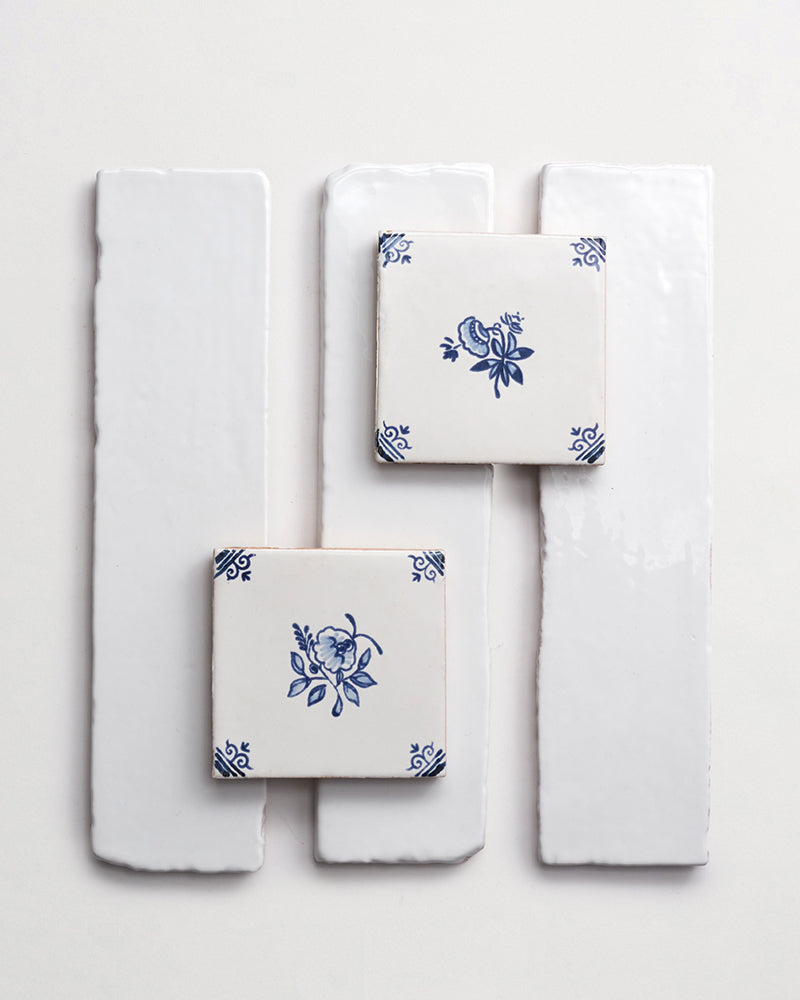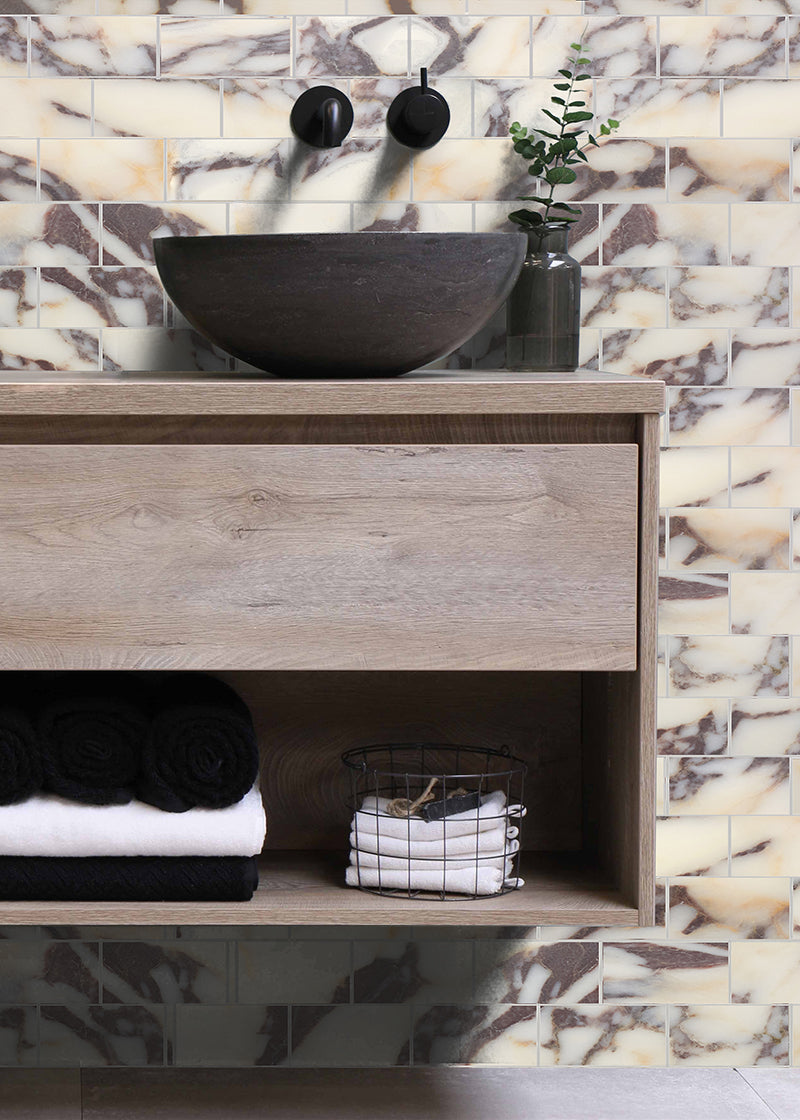types of bathroom tiles — and how to choose
by clé tile | published: Mar 25, 2024
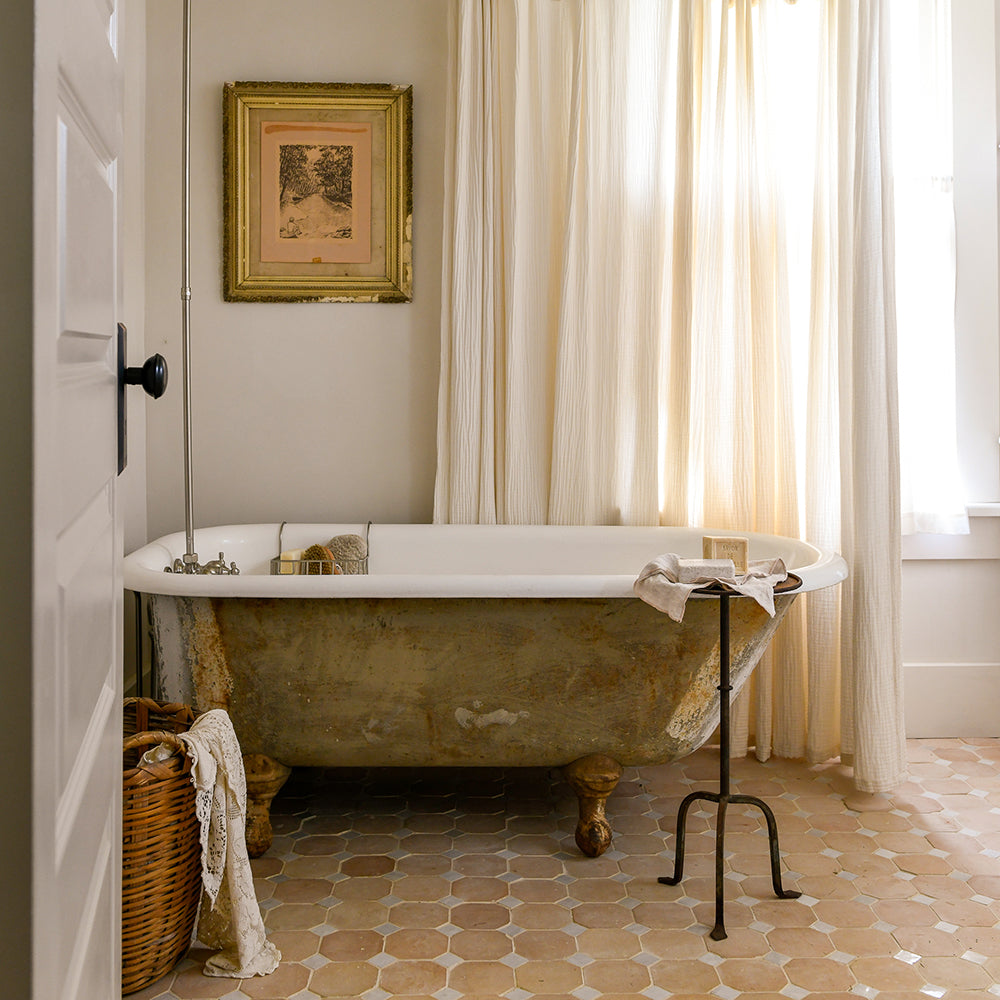
zio & sons + clé | natural octagon + sea salt bouchon. design: midland architecture + liz dutton interiors / photo: erin ash kelly
a bathroom design (or redesign) is an investment, one that will have you making design decisions at every turn. some decisions are less consequential, while others will live on in your home for years — even decades — to come. at the top of the list of those big decisions? the type of tile you choose.
exploring the best types of tile for bathroom design
choosing the right tile for your project can be exciting, thought-provoking, and dizzying all at once, especially because there is no single “best tile” for the bathroom. you’ll find loads of inspiration in our lookbook, of course, and we always recommend sampling tile to get a feel for how it will look in your space. it also helps to consider what you’re looking for — be it timeless, lived-in appeal or easy everyday maintenance — and then to consider what type of tile can help you achieve your goals.
below, ten of our most-loved bathroom tile types broken down by material, from ceramic to brick to cement to slate.
ceramic
if you picture classic subway tile in your new bathroom, ceramic could be for you. ceramic tile is clay-based and kiln-fired, making it exceptionally durable. glazed white ceramic tile, in particular, lends a classic feel. ceramic tile for shower walls is especially popular in kid-friendly bathrooms since it’s easy to clean.
white subway tile is just the start. hand-painted and artisanally shaped ceramic tiles like those in our maiolica de delft and fornace brioni + cristina celestino collections can add a playful touch to your space. then you have artistic unglazed options that lend even more color and texture. and we haven’t even gotten to unique tile layouts and grout colors.
keep in mind that glazed and glossy tiles like subway tile offer less slip resistance, especially when wet, so they are best installed on walls. if you’re keen on adding ceramic tile to your bathroom floor, consider using small penny rounds, which call for more grouting. (more grouting equals more traction.)
porcelain
porcelain tile is a type of ceramic tile that’s made with more refined clay. it’s also fired longer and at higher temperatures. this makes porcelain tile smoother, denser, and less porous when compared to ceramic tile. it’s more durable than ceramic tile, too, making it a popular choice for high-traffic areas (like busy bathrooms!).
our penny rounds are porcelain, as are the tiles in our watermark collection. the same guidelines for selecting ceramic tile still apply here: keep glazed and glossy options off of the bathroom floor, unless you’re considering smaller tiles like penny rounds.
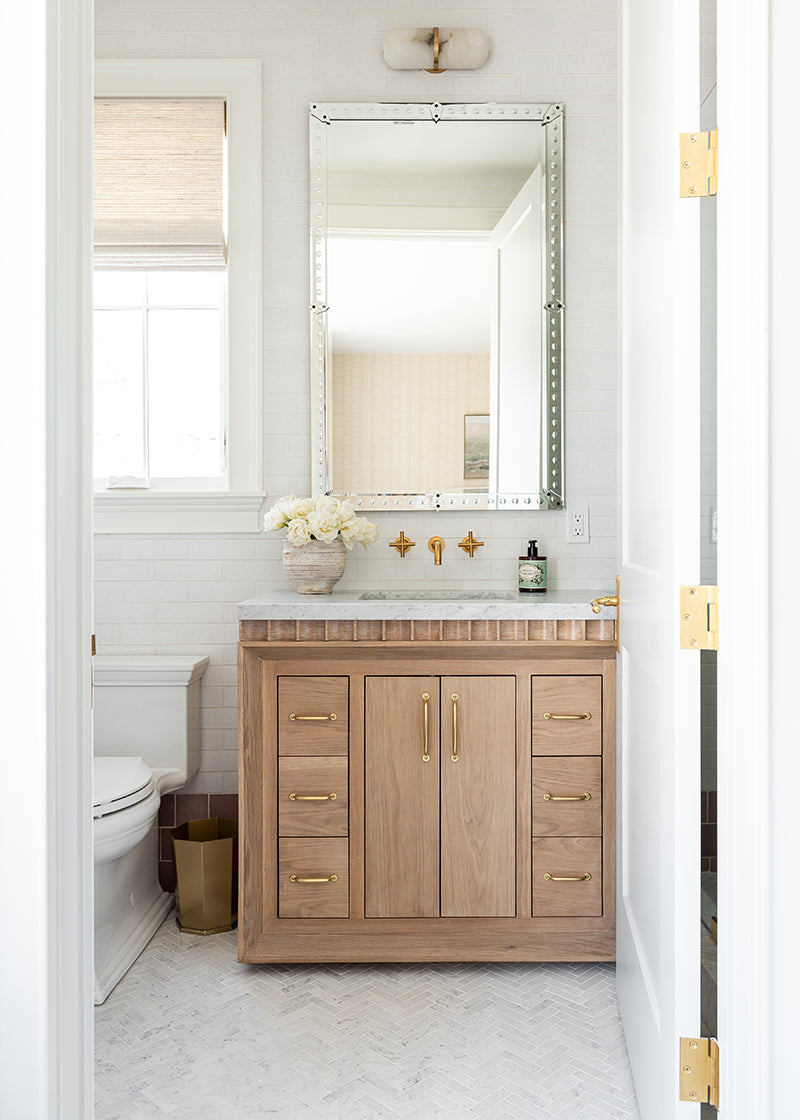
wall: clé thin glazed brick; floor: clé carrara in herringbone mosaic sheet. design / photo: studio mcgee
marble
marble is a classic natural stone in the bathroom, and for good reason. it adds an elegant touch to any surface and happens to be durable too. honed finishes are especially ideal because they offer improved slip resistance and hide wear more effectively.
while you can’t go wrong with classic carrara or white dolomite marble tile, options abound here. we love the idea of using velvety calacatta gold on the walls of a small bathroom or purply calacatta viola behind the sink.
marble tile is a beautiful addition to bathroom walls and floors alike. if you’re installing it on the bathroom floor, keep in mind that smaller tile options like narrow tiles in a herringbone pattern and penny rounds offer improved slip resistance due to more grouting. another thing to remember: any natural stone installed in the bathroom, especially on a steam room or shower floor, should be finished with a penetrating sealer.
if you’re installing marble tile in a shower, make sure you partner with a contractor who is knowledgeable about proper installation materials, waterproofing, and drainage sloping. many white marbles can be prone to rusting if not installed and treated properly, and other types of marbles such as green marbles can actually warp when exposed to improper drainage.
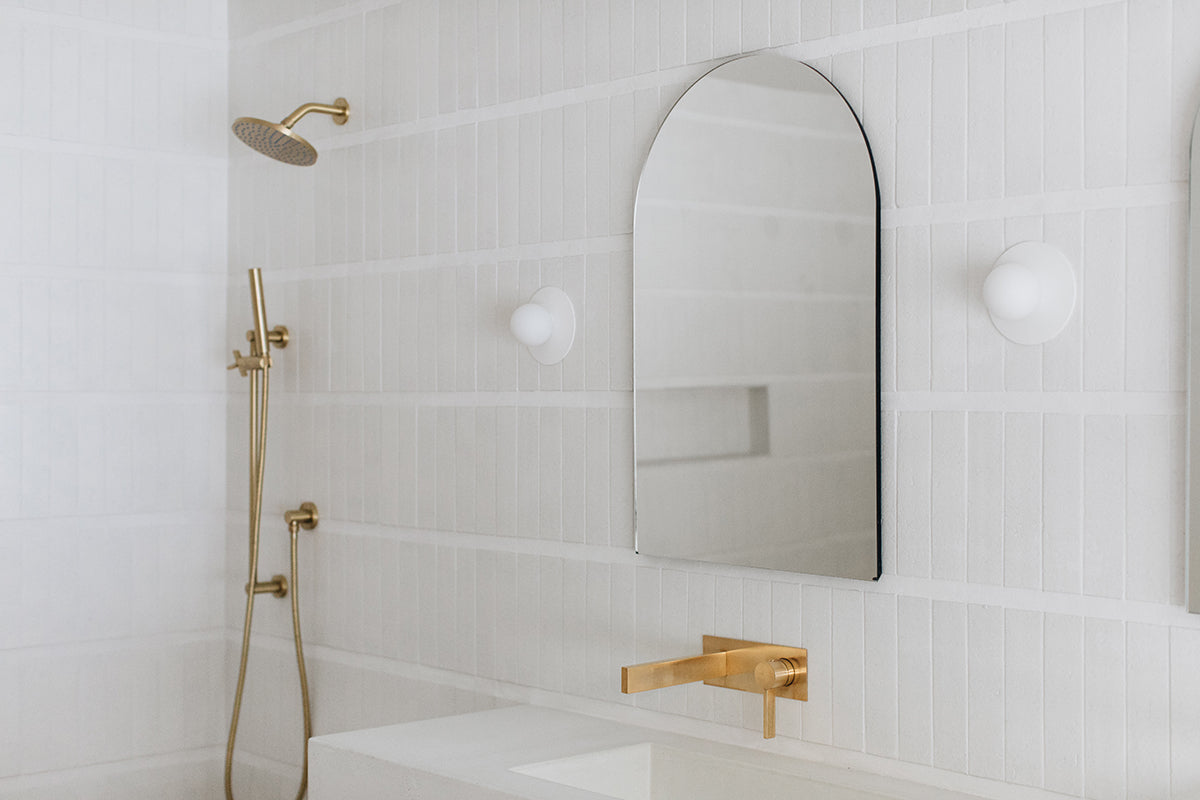
modern farmhouse brick in matte white. design: sarah sherman samuel / photo: stoffer photography interiors
brick
brick may not be the first tile material that comes to mind when you think “bathroom,” but it comes in a wealth of decorative (and very functional) options. unglazed tiles lend an especially rustic feel while glazed ones have the advantage of being easy to clean.
if you want the earthy texture that brick is famous for: unglazed options like our foundry flats tile look right at home on a bathroom wall. we’re also big fans of thin glazed brick like modern farmhouse brick, which takes the classic subway tile and elongates it for a look that’s more modern and textural. (designer sarah sherman samuel used this type of brick beautifully in her bathroom renovation.)
upkeep for a brick bathroom looks different depending on whether the tile is unglazed or glazed. unglazed tile requires continuing sealant maintenance using a waterproof sealer to protect it from splashes and excess moisture. for glazed brick tile, grout lines should be sealed as the final step of installation. generally speaking, glazed tiles are better for walls than for floors.
cement
cement tiles have graced homes, hotels, and cafés all over the world for at least a century, so they’re no stranger to the bathroom space. in addition to providing slip resistance, they develop a natural patina over time, making them an attractive option for those who appreciate a lived-in look.
if you’re feeling adventurous, you’ll love the bold colors and patterns that are available with cement. you might install pink hex tiles on the shower wall, for example, or star-studded tiles on the floor. another option is to go for a bright floor tile, then use the same tile as an accent for a built-in shower nook.
cement tile can be installed on bathroom walls and floors, including shower walls and floors. due to its porous nature, it will need a penetrating sealer after grouting — and again every six to twelve months, depending on how much traffic it sees. on an everyday basis, you’ll need to avoid using acidic cleaning products, as they can damage the surface of the tile. proper care during cement tile’s first few years of use is key for a beautiful patina.
one more note about installation: cement tile, in particular, requires a reputed and experienced installer in order to prevent common issues with poor installation. potential issues can include staining and efflorescence from incorrect draining, along with surface stains and etching from improper sealing.
terracotta
terracotta adds mediterranean flair to any space it meets, and the bathroom is no exception. unglazed tiles are naturally slip resistant, while glazed ones are blessedly easy to clean.
glazed and unglazed, from dusty pink to antique grey, terracotta tile comes in a surprising array of options. for a red-orange tile that’s almost neutral, you could add le sol to the sink backsplash or antique terracotta to the floor. want something darker? belgian reproduction floor tile pairs wonderfully with a soft-white glazed wall tile. if you’re searching for something bold or moody, look to the glazed options of eastern earthenware.
as with brick, upkeep for terracotta tile looks different depending on whether or not it’s glazed. all unglazed tile should be sealed as the final step of installation, while glazed brick tile needs sealing on the grout lines. again, glazed tiles are generally best for walls. unglazed terracotta may develop a strong patina.
like cement, how you care for unglazed terracotta during the first few years has a major influence on how it develops patina. hire an experienced professional to avoid issues such as staining, efflorescence, and etching, and be sure to avoid acidic substances that can damage the tile’s surface.
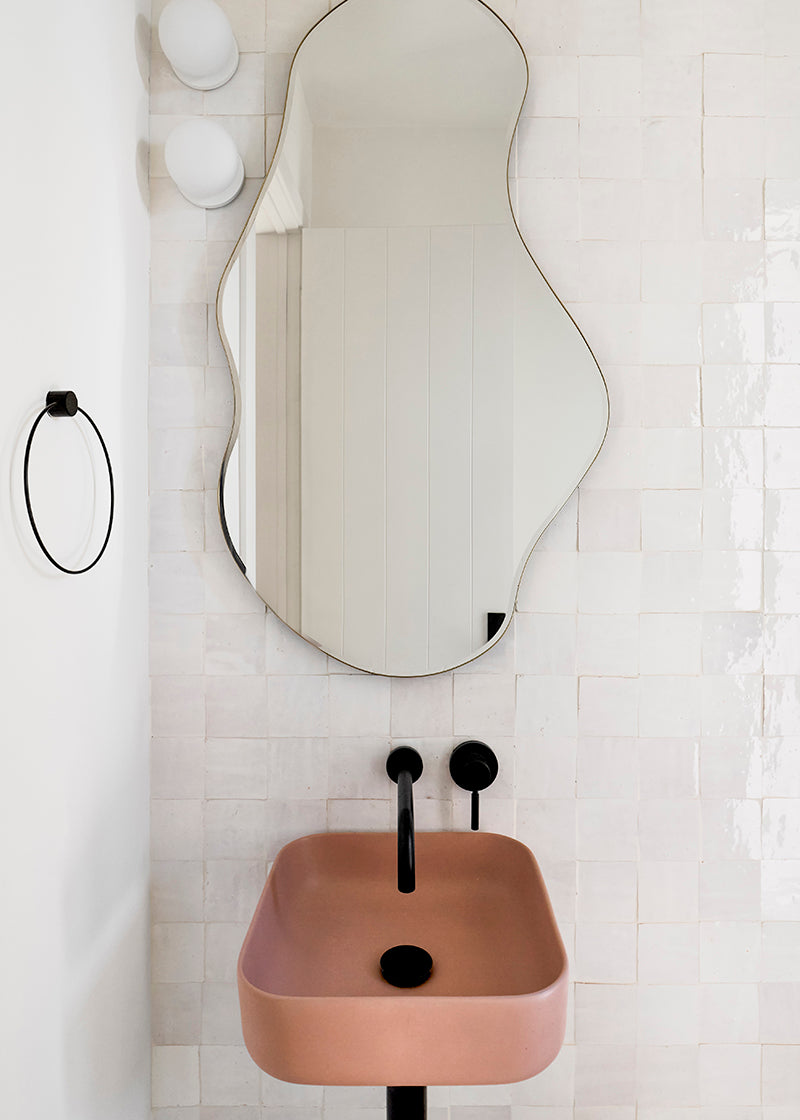
clé zellige in sea salt 4x4”. design / photo: anna kidd design
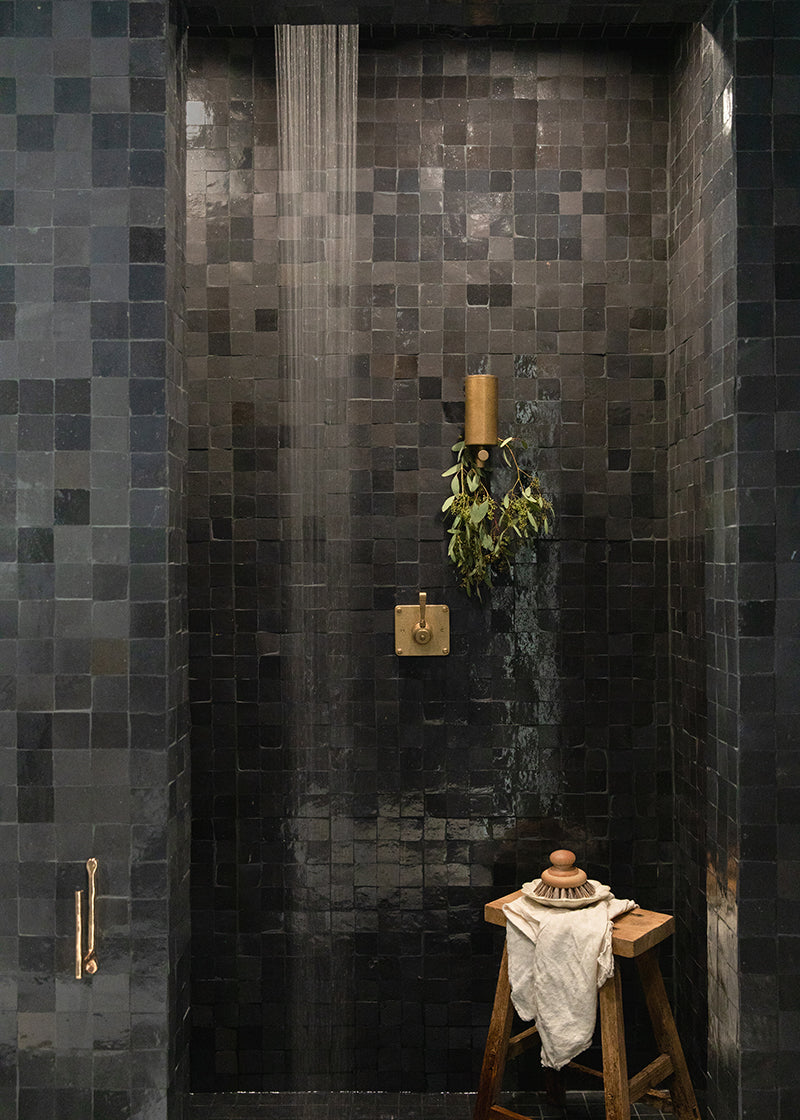
clé zellige battled armor 2x2”. design: innen studios / photo: bess friday
zellige
head to northern morocco, and that’s where you’ll find artisans crafting tile from local clay, then hand-cutting and glazing it to create zellige. authentic zellige shows the journey of its craft, complete with small chips, pits, and cracks. if you see perfection in imperfection, you’ll gravitate towards zellige.
most zellige tile is glazed, and you’ll find it in a whole medley of colors from warm white to midnight blue — even gold. it’s a beautiful choice for an entire shower wall without trim, or you can use it to lend a touch of color. design influencers studio mcgee did the latter in one of their daughter’s bathrooms, incorporating a rosy pink accent along the base of the shower.
because zellige tile is glazed, it has relatively little slip resistance, making it best for wall installations. if you’re itching to add zellige tile to your bathroom floor, consider a smaller tile that will call for more grouting, or go with an unglazed tile. all wet applications of zellige should be sealed regularly to protect the tile, and especially the grout, from staining.
terrazzo
ah, terrazzo — a composite tile made by mixing bits of stone, marble, or even glass with a cement base. terrazzo tile is impressively durable and can last for decades without showing major signs of wear. it also resists stains and water, making it an ideal option for the bathroom.
terrazzo tile functions wonderfully as a playful neutral, offering the versatility of a solid-color tile while bringing the visual interest of a pattern. (our forage terrazzo is an expert in that department.) because it’s such a customizable tile, you’ll also find it in bright and punchy color options.
terrazzo offers more traction than many other types of bathroom tile, so it’s an excellent pick for floors, in addition to walls. for bathroom installations, be sure it’s sealed with a waterproof, penetrating sealer upon installation and then maintained regularly to protect it from excess moisture. terrazzo tile also develops a lovely patina over time.
limestone
limestone has unique variation, veining, and fossilization, making it rustic, subdued, and noble all at once. you’ll find it in modern and traditional bathrooms alike, where its natural resistance to bacteria and mold makes it easy to care for.
limestone tile comes in a range of neutral color options, from cream to deep grey. (our grand place collection is living proof.) while it’s often sold in larger tiles for create a slab-like effect, you can also opt for smaller planks. these play wonderfully in a variety of patterns and layouts, from stacked and running bond to herringbone and chevron.
as with most natural stone tile, limestone is porous and should be sealed regularly with a penetrating sealer. this is especially true if it’s installed in a shower or steam room. limestone can also vary considerably from tile to tile, so be sure to order samples — and to blend your tiles before the installation process begins.
limestone is another tile type that requires the expertise of a reputed professional. if not installed correctly, it can develop staining and efflorescence from poor drainage, or etching due to improper sealing. with the right sealants and everyday maintenance (which includes avoiding acidic cleaning agents) your limestone tile will develop a lovely patina over time.
slate
one type of natural stone we haven’t yet discussed is slate. slate is nonporous and water-resistant, making it an especially popular choice for the bathroom. it also has a naturally slip-resistant texture.
we love the idea of using slate subway tiles on the walls and off-setting them with marble penny rounds on the floor. considering slate for the walls and floor? you might consider cutting large tiles down into smaller squares to create thoughtful contrast between the walls and floor. (studio mcgee did this in one of their guest bathrooms for a clean and uniform tone.)
slate will age beautifully, as long as it’s cared for properly. like marble, it should be sealed regularly with a penetrating sealer to protect it from stains, scratches, and excess moisture.

